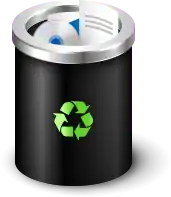Decoder (5e Class)
Decoder
Introduction
A human in a dark cave used up his last torch, he picks up a bone and whispers an incantation, causing it to glow. An elf ran out of arrows whilst being surrounded by goblins, she yells out an incantation creating several arrows of fire out of thin air, piercing the goblins all at once. A halfling is chased through a forest until he comes across a sheer cliff-face, he quickly mutters an incantation creating two, metal wedges and begins climbing.
Decoders draw their energy from the sun and earth, or the respective gods of the two, to access the very code that makes up the world. They use this code to form simple shapes and objects out of elements. The most skilled Decoders will usually carry some kind of flower with them, to amplify their abilities, since it is believed to be the very representation of the sun and earth.
Creating a Decoder
- Quick Build
You can make a Decoder quickly by following these suggestions. First, Intelligence should be your highest ability score, followed by Strength. Second, choose the <!-background name-> background. Third, choose <!-elaborate on equipment choices->
Class Features
As a Decoder you gain the following class features.
- Hit Points
Hit Dice: 1d8 per Decoder level
Hit Points at 1st Level: 1d8 + Constitution modifier
Hit Points at Higher Levels: 1d8 (or 5) + Constitution modifier per Decoder level after 1st
- Proficiencies
Armor: Light, Medium
Weapons: Martial Melee
Tools: Herbalism Kit
Saving Throws: Intelligence, Dexterity
Skills: Choose two from; Athletics, Acrobatics, Arcana, History, Nature, Medicine, or Persuasion
- Equipment
You start with the following equipment, in addition to the equipment granted by your background:
- (a) longsword or (b) greatsword
- (a) explorer's pack or (b) dungeoneer's pack
- herbalism kit
- 5 flowers (type dependent on time of year or location)
- If you are using starting wealth, you have 4d4 x 10gp in funds.
| Level | Proficiency Bonus | Features | System Control | Tool Control |
|---|---|---|---|---|
| 1st | +2 | System Control, Tool Control, Access Menu | 1 | 1 |
| 2nd | +2 | Flower Extraction | 2 | 2 |
| 3rd | +2 | Archetype | 3 (4 Synthesizer) | 3 (4 Integrity Knight) |
| 4th | +2 | Ability Score Improvement | 4 (6) | 4 (6) |
| 5th | +3 | — | 5 (8) | 5 (8) |
| 6th | +3 | — | 6 (10) | 6 (10) |
| 7th | +3 | — | 7 (12) | 7 (12) |
| 8th | +3 | Ability Score Improvement | 8 (14) | 8 (14) |
| 9th | +4 | — | 9 (16) | 9 (16) |
| 10th | +4 | — | 10 (18) | 10 (18) |
| 11th | +4 | — | 11 (20) | 11 (20) |
| 12th | +4 | Ability Score Improvement | 12 (22) | 12 (22) |
| 13th | +5 | — | 13 (24) | 13 (24) |
| 14th | +5 | — | 14 (26) | 14 (26) |
| 15th | +5 | — | 15 (28) | 15 (28) |
| 16th | +5 | Ability Score Improvement | 16 (30) | 16 (30) |
| 17th | +6 | — | 17 (32) | 17 (32) |
| 18th | +6 | — | 18 (34) | 18 (34) |
| 19th | +6 | Ability Score Improvement | 19 (36) | 19 (36) |
| 20th | +6 | — | 20 (38) | 20 (38) |
Decoder Class Features
- System Control
Aka "Sacred Arts". You have access to this at 1st lvl. A special form of spellcasting that is all formed via incantations. You gain access to a special ability that goes by the same name, "System Control" or "SC" for short. It increases by 1 every level. For every 1 it increases, you have that many “Sacred Arts” points, which are expended for casting “SC” spells. Your points are equal to your “SC” + your intelligence modifier. These points can be recovered via a short/long rest.
First a focus point is chosen where the spell is formed, usually palm or fingertips. More advanced casters are even able to use their toes/feet or, very dangerously, eyes, which requires an “SC” of at least 20.
Every incantation starts with "System Call" then follows "Generate (element; fire, ice, lightning, thunder, acid, necrotic, radiant) Element". Next a Shape; arrow, beam, or orb to start off with (refer to table for points cost and dice). It is said as “(desired shape) shape”
| Req. Levels | Arrow | Orb | Beam |
|---|---|---|---|
| 1st level | 1d6 Piecering (120 ft.) [1 Sacred Arts's Point] | 1d8 (90 ft.) [2 Sacred Arts's Point] | 1d10 (60 ft.) [3 Sacred Arts's Point] |
| Row header A | Cell B | Cell C |
Then a simple command such as; "Discharge"[causes the element to float off in whatever direction its being pointed, so this command is often times used after a direction is chosen such as "Fly Straight". Discharge can even be used as early as after an element is generated, however it will be shapeless and float in pointed direction], "Fly Straight" [most commonly used to focus the element in a straight line], "Adhere" [used to imbue element into a held object]
A forewarning: the "Sacred Arts" can be very a finicky things, if it is not said in the correct way or order then nothing or an undesirable result may occur. So think wisely before beginning an incantation (which is indeed required to cast).
(note for myself: plan on splitting and labeling damage for commands)
Archetype
At 3rd level, you chose an archetype. Choose between Synthesizer or Integrity Knight. Both detailed at the end of the class description. Your choice grants you features at 3rd level and again at <!-list all the levels the class gains subclass features->.->
Ability Score Increase
When you reach 4th level, and again at 8th, 12th, 16th and 19th level, you can increase one ability score of your choice by 2, or you can increase two ability scores of your choice by 1. As normal, you can't increase an ability score above 20 using this feature.
<!-Class Feature->
<!-Class feature game rule information->
Synthesizer
<!-For subclasses introduce this class option here->
- <!-Class Feature->
<!-Class feature game rule information->
- <!-Class Feature->
<!-Class feature game rule information->
- <!-Class Feature->
<!-Class feature game rule information->
Integrity Knight
<!-Introduce this subclass here->
- <!-Class Feature->
<!-Class feature game rule information->
- <!-Class Feature->
<!-Class feature game rule information->
- <!-Class Feature->
<!-Class feature game rule information->
Spell List
You know all of the spells on the basic spell list and additional spells based on your subclass.
- 1st Level
<!-1st level spell list->
- 2nd Level
<!-2nd level spell list->
- 3rd Level
<!-3rd level spell list->
- 4th Level
<!-4th level spell list->
- 5th Level
<!-5th level spell list->
Multiclassing
Prerequisites. To qualify for multiclassing into the <!-class name-> class, you must meet these prerequisites:
Proficiencies. When you multiclass into the <!-class name-> class, you gain the following proficiencies:
Back to Main Page → 5e Homebrew → Classes


